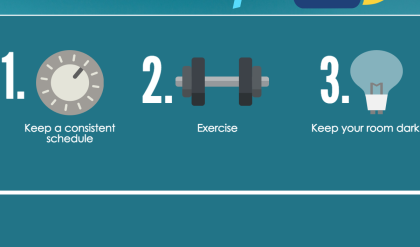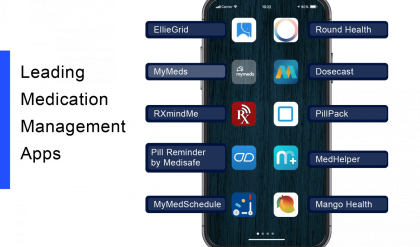
5 Simple Steps to Finding a Reliable Home Healthcare Provider: Navigating the Maze with Ease
Finding the right home healthcare provider can feel like navigating a labyrinth. Fear not! This isn’t a quest for the Holy Grail; it’s about finding the perfect fit for your or your loved one’s needs. With careful planning and these five simple steps, you can confidently choose a provider that offers compassionate care and peace of mind.
Step 1: Define Your Needs – Crafting Your Care Compass
Before embarking on your search, take a moment to pinpoint your specific needs. This isn’t about a generic checklist; it’s about creating a personalized “care compass” guiding your journey. Consider the following:
- Type of care: Do you need skilled nursing, physical therapy, occupational therapy, home health aides, or a combination?
- Frequency of care: Will care be needed daily, weekly, or just a few times a month?
- Specific services: Are there specific medical conditions or tasks requiring specialized attention? (e.g., wound care, medication management, assistance with bathing)
- Duration of care: Is this a short-term need or long-term care?
This clarity will significantly narrow your search and prevent wasted time pursuing unsuitable providers.
Step 2: Tap into Your Network – The Power of Word-of-Mouth
Don’t underestimate the power of personal recommendations. Start by talking to:
- Family and friends: Have they had positive experiences with home healthcare providers?
- Doctors and nurses: Your medical team often has valuable insights and connections.
- Social workers and case managers: These professionals frequently work with home healthcare agencies.
Word-of-mouth referrals can provide invaluable firsthand accounts of experiences, saving you time and effort in your research.
Step 3: Investigate and Compare – Your Due Diligence Toolkit
Once you have a list of potential providers, it’s time to conduct thorough research. Your toolkit should include:
- Online reviews: Check websites like Healthgrades, Google Reviews, and Yelp for patient feedback and ratings. Be mindful of both positive and negative reviews, paying attention to recurring themes.
- Licensing and accreditation: Verify the provider’s license and accreditation with your state’s licensing board and relevant accrediting organizations (e.g., The Joint Commission).
- Insurance coverage: Confirm whether the provider is in-network with your insurance plan to avoid unexpected out-of-pocket costs.
- Service area: Ensure the provider serves your geographic location.
| Feature | Provider A | Provider B |
|---|---|---|
| Licensing | Yes | Yes |
| Accreditation | JCAHO | AAAHC |
| Average Rating | 4.5 stars | 4.0 stars |
| Insurance Network | Yes (BlueCross) | Yes (Aetna, United) |
Step 4: The Interview Process – Finding Your Perfect Match
Don’t hesitate to schedule interviews with several providers. This is your chance to assess their suitability based on factors beyond their credentials:
- Staffing: Inquire about their staff-to-patient ratios and the qualifications of the caregivers.
- Communication: Assess their responsiveness, clarity, and overall communication style.
- Compassion and empathy: Look for providers who prioritize a caring and compassionate approach to care.
- Flexibility: Can they accommodate your specific needs and schedule?
Remember, you’re not just choosing a provider; you’re selecting a partner in your or your loved one’s healthcare journey.
Step 5: Ongoing Monitoring and Evaluation – The Continuous Improvement Cycle
Finding the right provider is just the first step. Continuous monitoring is crucial to ensure the care remains consistent and effective:
- Regular check-ins: Maintain open communication with the provider and the caregiver.
- Feedback mechanisms: Utilize available feedback channels to address any concerns promptly.
- Documentation review: Review the care plan and records periodically to monitor progress and identify any potential issues.
By proactively monitoring and evaluating the care provided, you can ensure a positive and successful home healthcare experience. Finding a reliable home healthcare provider doesn’t have to be daunting. With a structured approach and careful consideration, you can find a provider who offers exceptional care, bringing comfort and peace of mind to you and your family.

Additional Information
Delving Deeper: 5 Simple Steps to Finding a Reliable Home Healthcare Provider
The initial “5 Simple Steps” article likely outlined a basic framework for selecting a home healthcare provider. This expanded analysis dives deeper into each step, providing crucial insights and considerations often overlooked by prospective clients.
Step 1: Define Your Needs and Preferences: This seemingly simple step requires a thorough and nuanced approach. Beyond identifying the specific medical services required (e.g., wound care, medication management, physical therapy), consider:
- Level of care: Is intermittent care sufficient, or is 24/7 care necessary? This significantly impacts the type of provider and cost. For instance, a patient recovering from surgery might need intensive short-term care, while someone with a chronic illness requires ongoing, perhaps less intensive support.
- Caregiver preferences: Consider the patient’s personality and comfort level. Do they prefer male or female caregivers? What cultural or linguistic preferences are important? A mismatch here can significantly impact the effectiveness and satisfaction of the care provided. Studies have shown that culturally sensitive care leads to improved patient outcomes and adherence to treatment plans.
- Specific skills and certifications: Certain conditions require highly specialized skills. For example, a patient with a tracheostomy needs a caregiver proficient in tracheostomy care. Verify that potential providers have the necessary certifications and experience. The lack of proper certification can lead to medical errors and complications.
- Technology needs: Does the patient require specialized equipment or telehealth integration? The provider should have the capacity to handle this effectively.
Step 2: Check for Licensing and Accreditation: This step is crucial for ensuring safety and quality. However, simply verifying the existence of a license is insufficient.
- Verify license status: Use the relevant state’s licensing board website to confirm that the license is current and in good standing. Look for any disciplinary actions or complaints filed against the agency or individual caregivers.
- Accreditation: Look for accreditations from reputable organizations such as The Joint Commission or CHAP (Community Health Accreditation Partner). These organizations conduct rigorous evaluations of healthcare providers, ensuring adherence to quality standards. Studies show that accredited facilities have lower rates of adverse events.
- Insurance and Bonding: Ensure the agency and its caregivers are adequately insured and bonded to protect both the patient and the provider in case of accidents or incidents.
Step 3: Conduct Thorough Interviews and Background Checks: The interview process should be comprehensive and go beyond basic questions.
- Background checks: Inquire about the provider’s background check procedures for their caregivers. Reliable agencies conduct thorough background checks, including criminal history and reference checks. This is vital for patient safety. The failure to conduct thorough background checks can result in preventable harm.
- Caregiver qualifications: Inquire about the caregivers’ experience, training, and certifications specific to the patient’s needs. Ask for references and contact them to gather firsthand accounts of their experience with the agency and caregivers.
- Communication and professionalism: Assess the agency’s responsiveness, professionalism, and ability to clearly communicate information. A lack of clear communication can lead to misunderstandings and errors in care.
Step 4: Assess the Agency’s Reputation and Client Feedback:
- Online reviews: Examine online reviews on sites like Google, Yelp, and Healthgrades. While not always perfect, reviews offer valuable insights into the agency’s reputation and client experiences. Analyze both positive and negative reviews to identify recurring themes.
- Client testimonials: Request testimonials from past or current clients. Direct contact with satisfied clients can provide valuable firsthand information about the quality of care provided.
- Better Business Bureau (BBB) rating: Check the agency’s rating with the BBB to assess their history of handling complaints and resolving disputes.
Step 5: Review Contracts and Policies Carefully: This step is often overlooked, but it’s crucial for protecting the patient’s rights and interests.
- Service agreements: Thoroughly review the service agreement, paying close attention to the scope of services, payment terms, cancellation policies, and dispute resolution procedures.
- Liability and insurance coverage: Ensure the contract clarifies the agency’s liability for potential incidents and the extent of their insurance coverage.
- HIPAA compliance: Verify that the agency complies with HIPAA regulations to protect the patient’s health information privacy. Non-compliance can lead to serious legal and ethical consequences.
By taking a thorough and analytical approach to each of these steps, individuals can significantly improve their chances of finding a reliable and trustworthy home healthcare provider that effectively meets their needs and ensures their well-being. Remember that choosing a home healthcare provider is a crucial decision impacting the health, safety, and quality of life of the patient. Due diligence is not just advisable, it’s essential.






